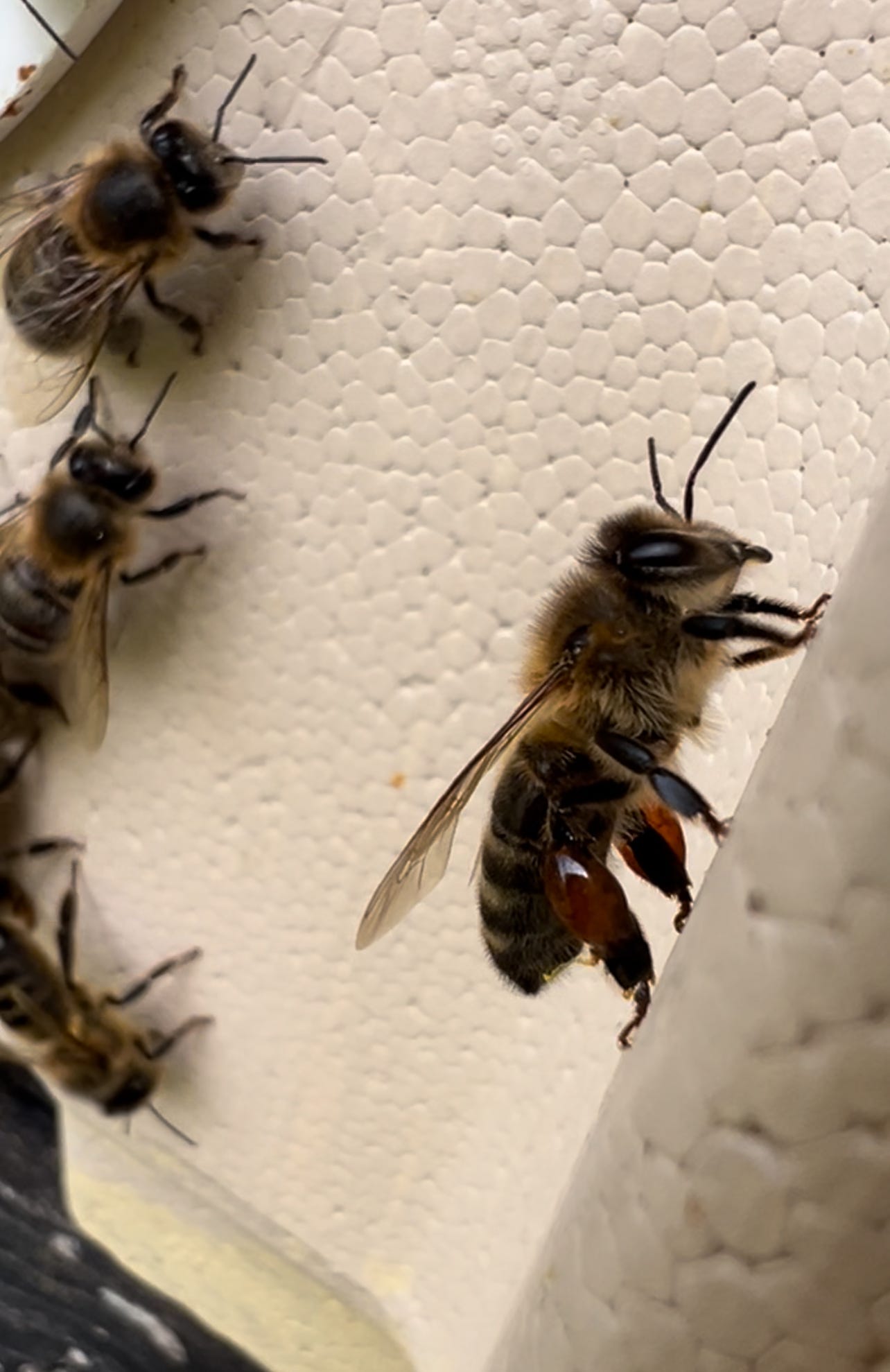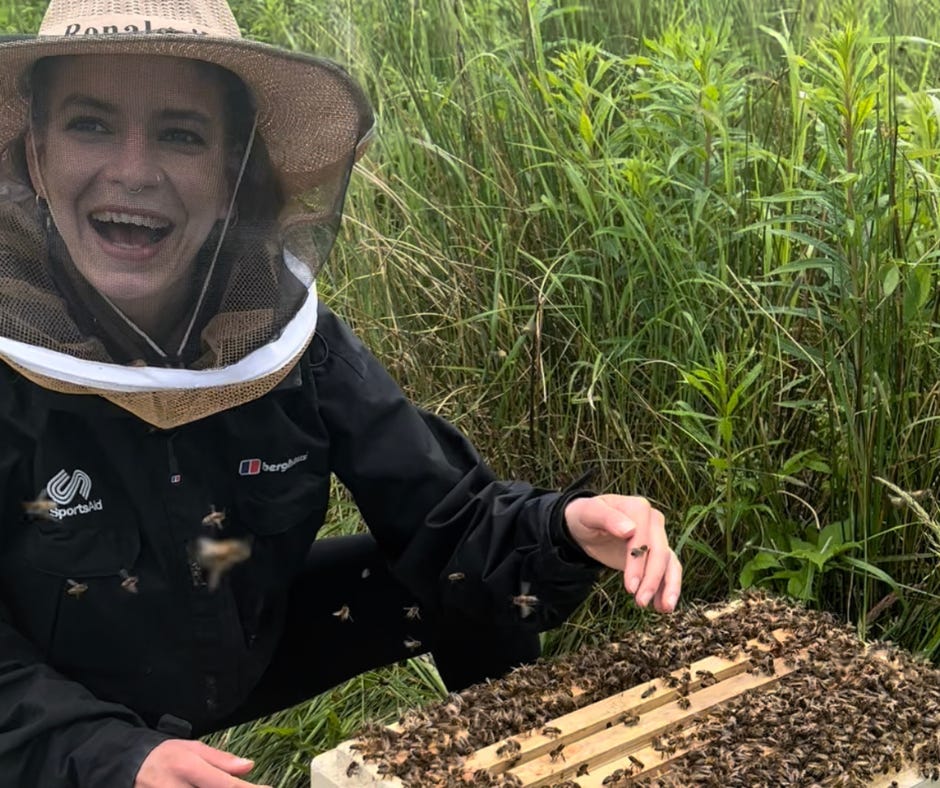You’ve never met a bee like her (and most beekeepers don’t want to)
The dark bee’s legacy is fading. And it didn’t start with pesticides.
When glaciers covered most of Europe, when mammoths roamed and early humans huddled around fires, this bee was here. Evolving in the cold. Adapting to scarcity. Learning how to ride out six months of winter with very little to go on.
And not only did she survive—she thrived. For thousands of years. Long before sugar syrup. Long before beekeepers. Long before we tried to turn bees into factory workers in wooden boxes.
Today, barely anyone knows her.
Modern beekeeping doesn’t want bees like her.
It wants bees who start brooding early in spring, who build up quickly, who don’t swarm, who pump out honey like clockwork.
So they import Italian bees, or Buckfast bees, bred for traits humans find “desirable”: productivity and docility. These imported bees are not resiliente and they are not local to the landscape. (It’s like taking a husky into the Sahara and wondering why it struggles.)
And meanwhile, the dark bee—the one who knows how to handle long damp winters and sudden frosts—is slowly being erased.
Here in Scotland, I let my bees mate freely.
I don’t control their reproduction, which is rare in beekeeping today.
Most beekeepers requeen every year or import queens with “known” genetics. But my bees choose their mates. They follow their instincts.
My small, treatment-free apiary is a rich, diverse gene pool of honey bees.
About 80–85% of my bees are dark bees. Some are hybrids. Some are mutts. Some have the look of wildness about them.
But what ties them together is this: they know how to live here. In this land. On these winds.
Why the dark bee is not popular?
She is slower to start in spring. She doesn’t explode with brood like an Italian. She is frugal with her energy. She swarms when she feels like it. She doesn’t care about your production goals. She is not “easy to work with.” She’s not soft and sunny. She doesn’t charm the hobbyists.
But isn’t that exactly why she matters?
Because we are not living in stable times.
The weather is unpredictable and the old calendars don’t hold.
And in a collapsing climate, we don’t need more bees bred for human convenience.
We need bees who remember how to survive.
How long can we play capitalism before we loose everything?
I’ve spent the past years listening to her.
Watching her habits, her resilience, the way she forages when no other bees are flying. The way she conserves energy like a creature who knows what it means to go without.
And I realised: she’s not the past.
She’s the future.
If we let her disappear, if we keep replacing her with imported genetics that can’t handle our weather, our flora, our instability we lose something ancient.
We lose a teacher. A map. A living archive of adaptation.
So I’m telling her story
I’m recording a class about the dark bee, Apis mellifera mellifera.
This class is for anyone who is tired of monoculture.
Anyone who feels grief when the old things vanish.
Anyone who wants to understand how wild resilience actually looks.
If you want to learn about the bee that outlived the Ice Age,
and how she might outlive us, too,
you can join the waitlist [clickhere].






